
views
- A swarm of spiders is a mass that acts as a single creature during combat in D&D. With a challenge rating of ½, spider swarms are often foes for low-level players.
- Spider swarms can climb across ceilings, walls, and difficult terrain without needing to make an ability check. They can also sense other creatures that step on their webs.
- In combat, a swarm of spiders can use an action to take the “Bite” attack, dealing 4d4 points of piercing damage to foes (or 2d4 if the swarm has half its hit points or less).
What is a swarm of spiders in 5e?
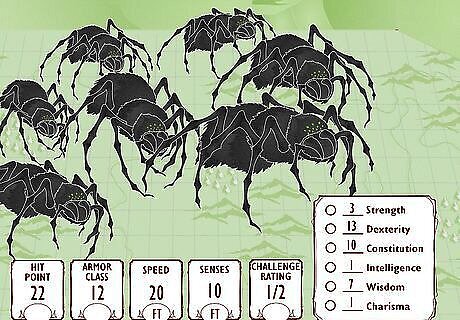
The swarm of insects (spiders) is a potential enemy for player characters. In D&D 5e, every foe that can be pitted against player characters (PCs) in a fight or used in encounters (from beasts like owlbears to aberrations like mind flayers) has a stat block. Stat blocks list a creature’s defenses, traits, and capabilities in battle. Thus, a “swarm of spiders” is a variation of the “swarm of insects” stat block for D&D—and its stat block tells DMs what a swarm of spiders can do in battle. Its statistics include: Hit points: 22 Armor class: 12 Speed: 20 feet (and a climb speed of 20 feet) Senses: Blindsight 10 feet, passive Perception 8 Damage resistances: Bludgeoning, piercing and slashing Condition Immunities: Charmed, frightened, grappled, paralyzed, petrified, prone, restrained, and stunned Ability Scores: Strength 3 (-4), Dexterity 13 (+1), Constitution 10 (+0), Intelligence 1 (-5), Wisdom 7 (-2), and Charisma 1 (-5) Challenge Rating: ½ (worth 100 XP)
Swarm of Spiders Traits & Attacks
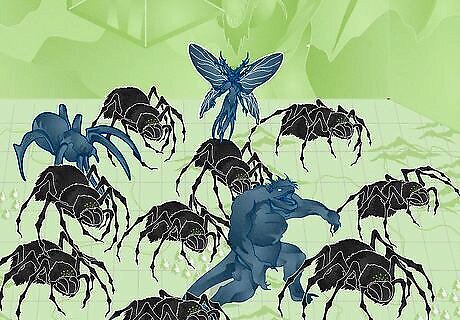
Swarm A swarm of spiders can share the same space as another creature (and vice versa). Additionally, the swarm can move through any opening large enough for an insect (which are classified as “Tiny” in D&D 5e). Because they’re made up of hundreds of insects, swarms can’t recover any hit points or get temporary hit points. All creatures (including player characters) have a designated size in D&D. Most humanoid creatures have a size somewhere between “Small” (like a goblin or halfling) and “Medium” (like a human or elf). Because spider swarms are considered Tiny (and are actually a group of creatures rather than a single creature), they can fit into spaces that Small and Medium creatures can’t—and even climb onto other creatures.
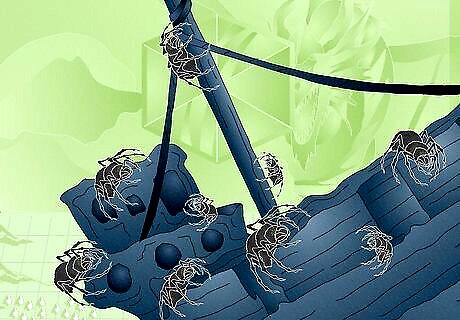
Spider Climb A swarm of spiders can climb all kinds of surfaces and difficult terrain without needing to make an ability check. This includes climbing upside down on the ceiling and scaling up and down walls. Because the swarm’s climbing speed is 20 feet, that means it can climb up to 20 feet per round—or more if the swarm uses its action to move as well. Most creatures can’t climb up walls or on ceilings in D&D unless otherwise stated—which is why a spider swarm’s mobility can be helpful when you’re running a battle!

Web Sense While a spider swarm is making contact with a spider web, it knows the exact location of any other creature that is also in contact with the web. Essentially, it’s tough to surprise spider swarms if their lair is covered in webbing—and if you’re going to be a Dungeon Master (DM), that makes it easy to ambush PCs with spider swarms, especially in dark caves or decaying old buildings. For example, if the party steps into a cave covered in cobwebs, you (as the DM) could have several swarms of spiders surprise the characters after having sensed them enter.
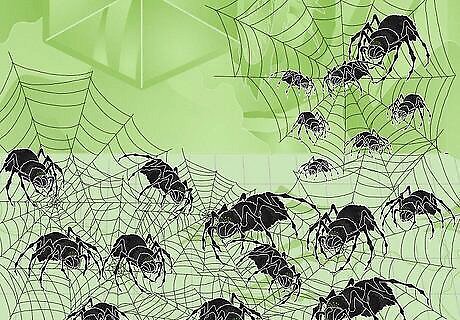
Web Walker Swarms of spiders can ignore all movement restrictions caused by webbing. In 5e, spider webs typically count as difficult terrain—meaning that any creature’s movement speed is halved while moving through webbed terrain (unless they have a specific ability or item to prevent this). Furthermore, when creatures enter webbed terrain, they must make a Dexterity saving throw or become restrained (meaning they can’t move). However, none of those effects apply to spider swarms! Saving throws measure a creature’s ability to resist an effect. In this case, a Dexterity saving throw would determine a PC’s ability to avoid the sticky spider webs and keep moving. Movement speed determines how far a creature can travel in a single round. Because difficult terrain halves movement, a creature with a movement speed of 30 could only move 15 feet per round when stepping through webbed terrain.
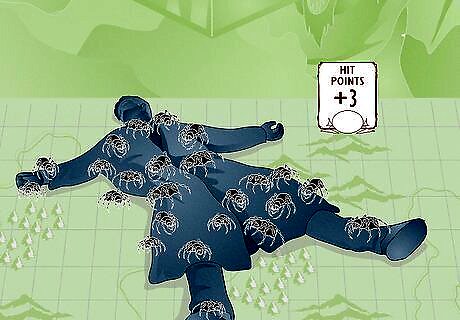
Bite As an action, the swarm of spiders can make a melee attack on a creature within 0 feet (meaning the swarm has to be sharing the same space as that creature—or, in other words, crawling all over the creature it wants to attack). The swarm gets a +3 attack bonus, and if it hits, it deals 4d4 points of piercing damage (or 2d4 if the swarm is reduced to half its hit points). Hit points measure a creature’s vitality and ability to take damage in combat. For spider swarms, hit points also essentially measure how many spiders in the swarm are still alive. Normally, hit points don’t affect the strength of a creature’s attacks—but since damaging spider swarms implies that characters are killing off spiders in the swarm, a swarm with half its hit points does less damage.
How to Use a Swarm of Spiders as a DM

Pit characters against multiple swarms for a balanced difficulty level. If you’re setting up an encounter with only spider swarms to fight a party of player characters, be sure to create a balanced encounter that isn’t too easy. Spider swarms only have a difficulty rating of ½, so it’ll likely take at least 2 to 3 swarms to make an encounter challenging for a group of low-level PCs. Keep in mind that a swarm of spiders is very easy to defeat for higher-level parties and probably isn’t the best choice for a combat encounter. Generally, insect swarms can be challenging for tier 1 PCs (levels 1 to 4) but aren’t hard at all for tier 2 (levels 5 to 10), tier 3 (levels 11 to 16), or tier 4 (levels 17 to 20). Not sure how to make combat balanced? Use an online encounter builder (like the one on D&D Beyond) to ensure your spider swarm encounter is as balanced as possible.
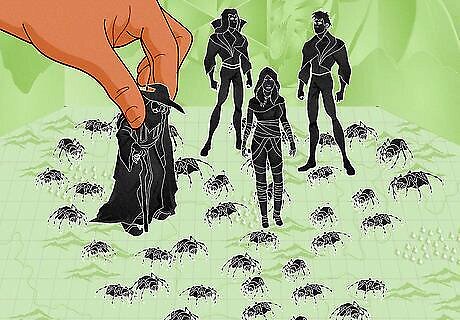
Add other foes to the encounter and use the swarm as cannon fodder. Even if the PCs in your D&D campaign are a little too strong for spider swarms alone, that doesn’t mean you can’t use them! Simply build a combat encounter around another creature—one with a challenge rating that fits the PCs’ current levels—and add a couple of spider swarms to back that creature up, adding extra danger to the battle. For example, say you’re DMing for a party of 4 PCs with an average level of 5. You’re running a one-shot about a haunted house in which the party encounters an allip (which is a type of evil undead spirit). Alone, an Allip is a relatively easy foe for 4 level 5 characters—but if you have 2 spider swarms crawl out of the woodworks to fight alongside the allip, that’d instantly create a challenging encounter for your PCs!
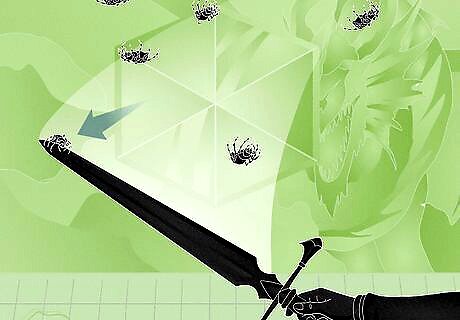
Give encounters more impact by describing the spider swarm in detail. Want to make your spider swarm encounter feel darker and more threatening? Don’t just tell players, “A swarm of spiders crawls out and attacks you.” Describe what happens in detail! Spiders are often considered scary for a reason; tell players what the swarm looks like, how it moves, and how it feels when it starts crawling over their characters. For example, when a PC makes an attack against the swarm, you might say, “You manage to send a few flying back through the air—but more tiny black spiders start scuttling up the tip of your blade, searching for cracks in your armor.” Just make sure players are comfortable hearing sensory details first! It’s fun to make encounters more vivid, but not if players aren’t enjoying themselves.
How to Use a Swarm of Spiders as a Ranger

Swarmkeeper Rangers have a “Gathered Swarm” ability at level 3. Normally, swarms of spiders are potential enemies for PCs to fight—but when you’re playing a ranger (a warrior with close ties to nature and navigating the wilds) with the Swarmkeeper subclass, you can get spider swarms to do your bidding instead! The Gathered Swarm ability summons a swarm of nature spirits, and you can decide what the swarm looks like, giving you the power to summon a swarm of spiders if you choose! You can use the Gathered Swarm ability to do any of the following things after you hit a creature with an attack: The swarm causes your attack to deal an extra 1d6 damage. The target of your attack must pass a Strength saving throw or get moved up to 15 feet by the swarm (and you choose the direction). The swarm moves your PC 5 feet horizontally in whatever direction you choose.
Homebrew Rules for Swarms

Try letting a swarm of spiders ignore worn armor on characters. Since a swarm of spiders counts as “Tiny” in 5e rules and is comprised of many minuscule bugs, it’d make sense for the spiders to be able to find the spaces between plates of armor and crawl under them. Thus, heavily armored PCs might not be able to reap the benefits of their protective gear! However, natural armor and magic armor would still work against a spider swarm. This is an example of a homebrew rule—meaning it’s not included in the official 5e rules, but a DM could choose to implement it (or make up a rule of their own). So, for example, a paladin with plate armor might have to fight a spider swarm battle with spiders ignoring that plate armor, crawling underneath it to bite them. Ignoring armor makes armored PCs much easier to attack and bite—which is helpful since spider swarms normally have such a low attack bonus and challenge rating.

Give PCs disadvantage on perception checks while fighting a swarm. Because swarms can share the same space with another creature and climb all over them in order to make successful attacks, you could rule that PCs sharing a space with a swarm can’t see clearly. As a result, PCs in the melee range of a swarm must make all perception checks with disadvantage, meaning they must roll 2d20s and take the lower result. In D&D, perception is a skill that allows characters to notice details in their environment. This includes picking up on whispered conversations nearby, noticing hidden enemies, or finding telltale signs of an ambush.
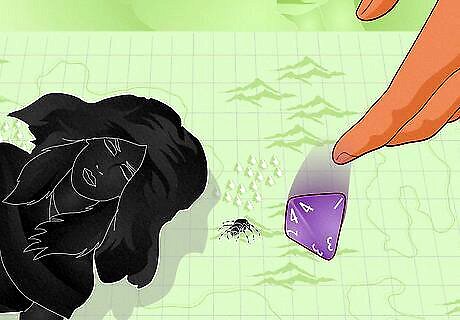
Let swarms deal poison damage in addition to piercing damage. Some spider species in the real world are venomous—so it stands to reason that you could create a venomous spider swarm in D&D! If you want to make your swarm of spiders a more challenging foe for players, add poison damage to each of its attacks (on top of the piercing damage the swarm normally does). For example, you might tell players who get attacked to make a Constitution saving throw. On a failed save, their PC takes 2d4 poison damage. On a successful save, they take half that damage.
















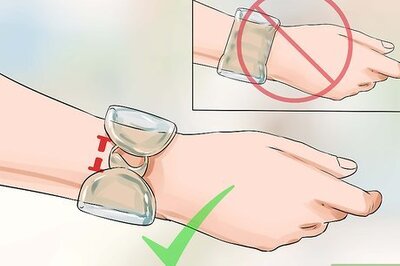

Comments
0 comment